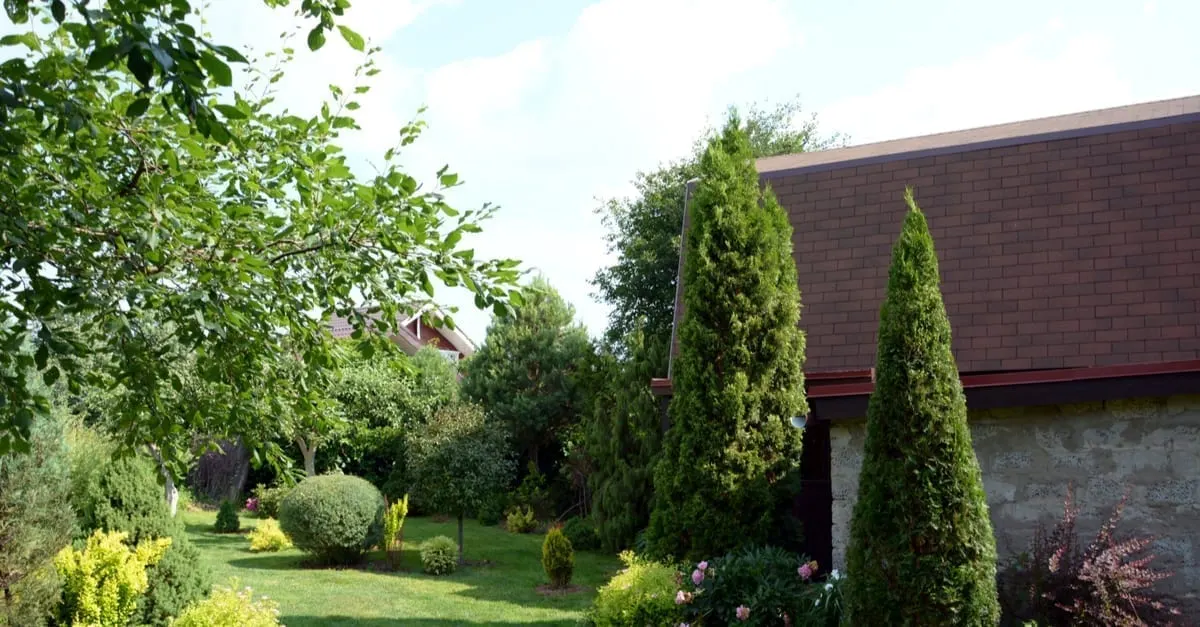When it comes to creating a tidy, manicured landscape with year-round color, Emerald Green Arborvitae is one of the most popular options.
Moderately priced, attractive, and reaching 10 to 15 feet tall, they add a lush pop of emerald green foliage to any landscape.
In this article, we’ll cover valuable information about Emerald Green Arborvitae, including:
- Other common names
- Hardiness zone
- Light needs
- Pruning
- Soil conditions
- Fertilization
- Growth rate
- Planting and spacing
- Use as a privacy screen
If you’re considering planting these tree-like shrubs in your landscape, make sure you know the needs of this unique evergreen shrub.
What Is the Emerald Green Arborvitae
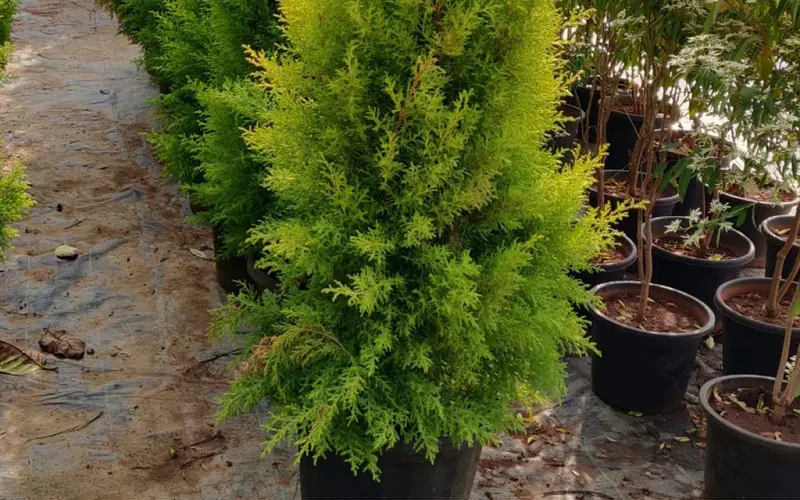
AKM Creatives/Shutterstock
The Emerald Green Arborvitae is a small, evergreen shrub that grows relatively slowly. This shrub grows in a cone or pyramid shape. At maturity, it reaches a height of about 15 feet and is about 3 to 4 feet wide.
However, in the forest, it can reach a height of nearly 50 feet. Because it is an evergreen shrub, it does not shed its leaves or needles in the fall.
There is no dwarf cultivar of the Emerald Green Arborvitae. It is classified as a semi-dwarf shrub or tree.
This evergreen does not flower or bloom. Instead, it produces cones that open as they mature. When the cones open fully, they look like small roses and attract birds.
Common Names
You may hear this plant referred to by many different names. Some of the most common names for this shrub include:
- Emerald Green Arborvitae
- Emerald Eastern Arborvitae
- Scientific name: Thuja occidentalis ‘Smaragd’
The cultivar name, ‘Smaragd,’ is the Danish word for emerald. ‘Arborvitae’ translates to the “tree of life.”
A related cultivar, the Green Giant Arborvitae, is similar and just as popular. It is much larger, however, reaching heights of around 30 to 40 feet and widths of about 10 to 12 feet at its mature size.
Hardiness Zone
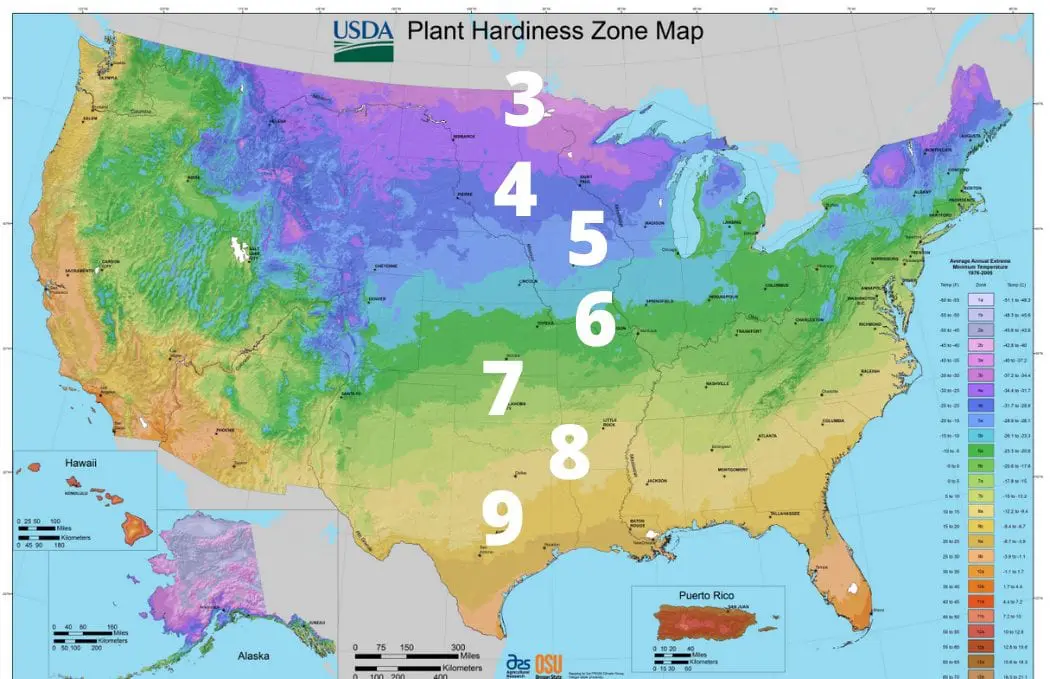
Image Source: REthority/USDA
The Emerald Green cultivar can grow well in zones 2 through 7. This encompasses most of the contiguous United States, except for the deep south.
Plants of the Chicago Region, a native plant reference book, discusses the Emerald Green Arborvitae in depth. It is native to Chicago, where it is exposed regularly to frigid temperatures, road salt, and heat in summer.
This shrub can survive and thrive in a wide range of climates and areas. It does well in warm, cold, and wet areas with a lot of rainfall.
Light Requirements
Emerald greens prefer full sun to partial shade. They will not do as well in conditions offering less light, and in full-shade conditions, they are not likely to survive.
If planting these shrubs in your landscape, be sure there is sufficient sunlight throughout the day.
Pruning
These shrubs stand up very well to pruning and shearing. They will put off new growth in the areas that have been trimmed back or pruned, so it’s best to prune them during the warmer months.
This cultivar is sometimes used to create spiral topiaries because of its conical shape and dense foliage.
Soil Conditions
Loamy, well-draining soil is the best for Emerald Green Arborvitae. Heavy clay soils are not detrimental to these shrubs.
However, light and loamy soil allows the roots to spread and take up plenty of water and nutrients.
Soil acidity should be relatively low. These shrubs prefer soil with a pH that is neutral to alkaline.
Using Emerald Green Arborvitae in Landscaping
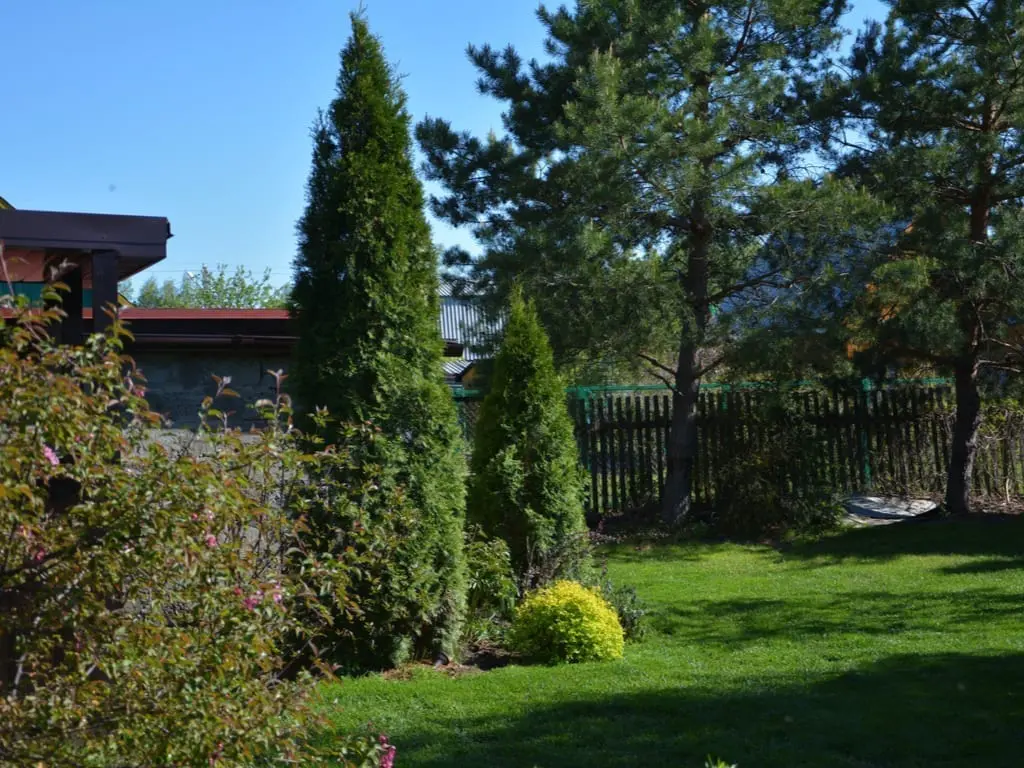
Vladimir Shulikovskiy/Shutterstock
Arborvitae are typically planted in clusters or rows as a privacy screen or hedge in landscaping.
A single shrub may be used as a privacy tree to block or cover an unattractive area or eyesore, such as an HVAC unit.
They are suited for this use because of their height, width, lush green year-round color, and density.
Growth Rate
These shrubs have a relatively slow growth rate. You can expect the Emerald Green Arborvitae to grow about 12 inches, or 1 foot, in height.
This slow growth rate is the reason many homeowners choose to use different methods of planting and spacing these shrubs in their landscape.
They can take a while to fill out the spaces left between them during planting.
Planting and Spacing
The best time to plant Emerald Green Arborvitae is in the fall, when temperatures are cooler. This gives them time to re-establish root systems during the winter months and begin growing actively again in the spring.
In general, the recommendation is to plant Emerald Green Arborvitae about 3 to 4 feet apart to allow enough room for them to reach their natural width of around 3 feet.
When planting, the distance between trees should be measured from the center of one tree to the center of the next.
Emerald Green Arborvitae Privacy Hedges
Emerald Green Arborvitae make excellent privacy barriers because of their dense, lush growth that lasts year-round. In landscaping, they can be used to create a tall privacy hedge in a relatively short amount of time.
There are a few methods to create a privacy hedge with Arborvitae, all of which form the full, dense barrier in varying amounts of time. Let’s look at three popular methods.
Method 1: Planted Closely
Plant arborvitae about 2 feet apart to create a dense privacy hedge within 5 years.
Typically, these shrubs would be planted about 3 feet apart. As a result, closing the gap between them by one foot means the hedge grows more closely together in a shorter amount of time.
Method 2: Spaced Out
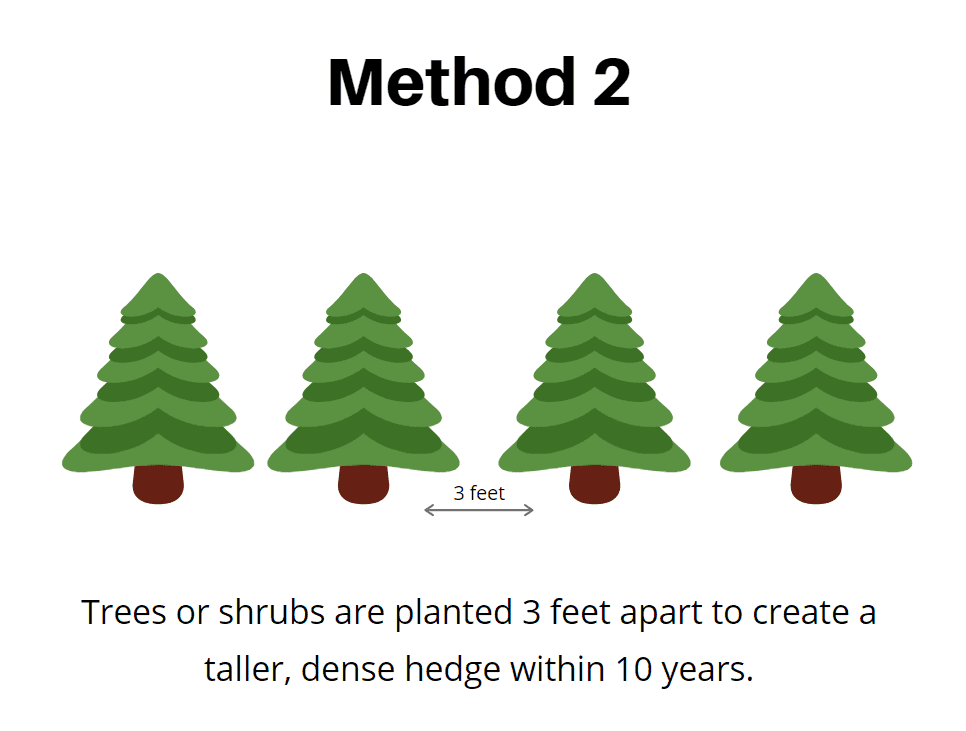
Image Source: REthority
Space shrubs 3-4 feet apart to slowly create a dense, tall privacy hedge over time (about 7-10 years).
This method allows the shrubs to grow to their highest and fullest potential at the expense of waiting a few more years to see the hedge fill out.
Method 3: Zig Zag
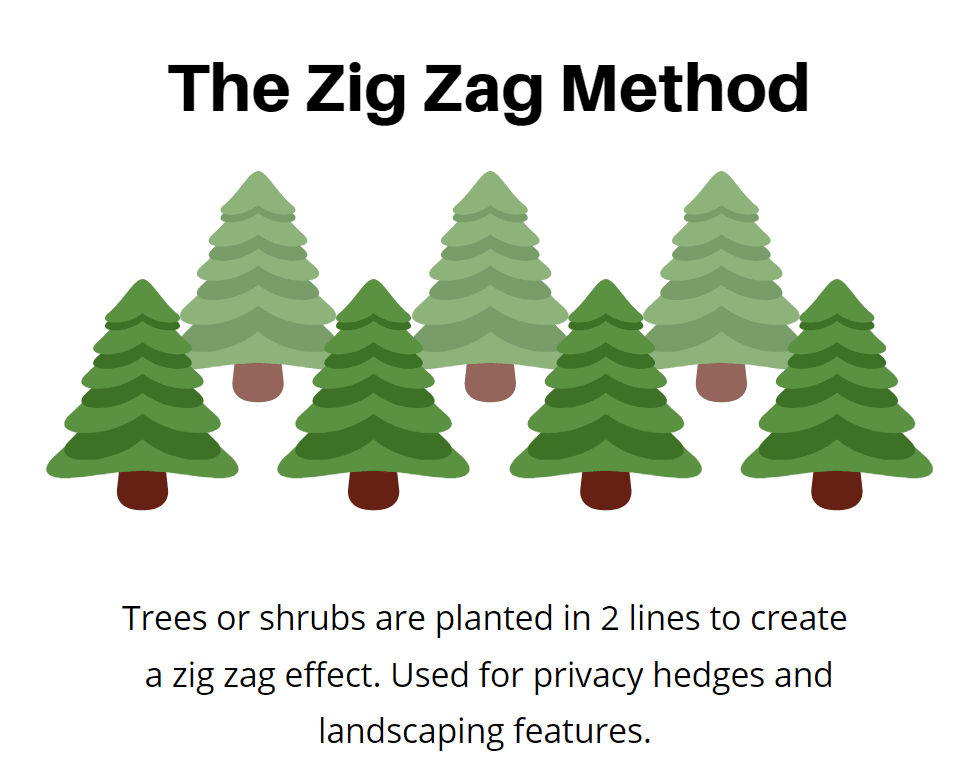
Image Source: REthority
The staggering or “zig-zag” method is beneficial to create a privacy hedge around a yard or deck quickly. These methods ensure there are no gaps in the greenery.
This helps you get a head start on the dense greenery that usually takes years of growth to reach. The shrubs are planted in 2 staggered lines, creating a “zig-zag” effect as the images below show.
Cost and Where to Purchase
Emerald Green Arborvitae can be found in nearly any garden center, nursery, and plant catalog. They are ubiquitous shrubs and are not difficult to find.
The biggest obstacle for purchasing this evergreen shrub is the cost. Small shrubs that are a long way from maturity can be bought for about $20 to $40. Larger shrubs closer to maturity cost around $70 to $110 each.
To create the most significant visual impact with clusters of shrubs (or to use them as a privacy screen), the total cost can reach upwards of $1,000.
Should You Use an Emerald Green Arborvitae?
Emerald Green Arborvitae is a popular choice for landscaping for a reason. With their moderate size, hardiness, and deep-green foliage, they provide an aesthetic touch to a landscape even planted singularly or in small groups.
As a natural privacy screen, they can create a zone of dense greenery that is not easily walked or seen through.
In areas cold, warm, and everything in between, these shrubs can create the year-round, low-maintenance greenery that your landscape needs.

